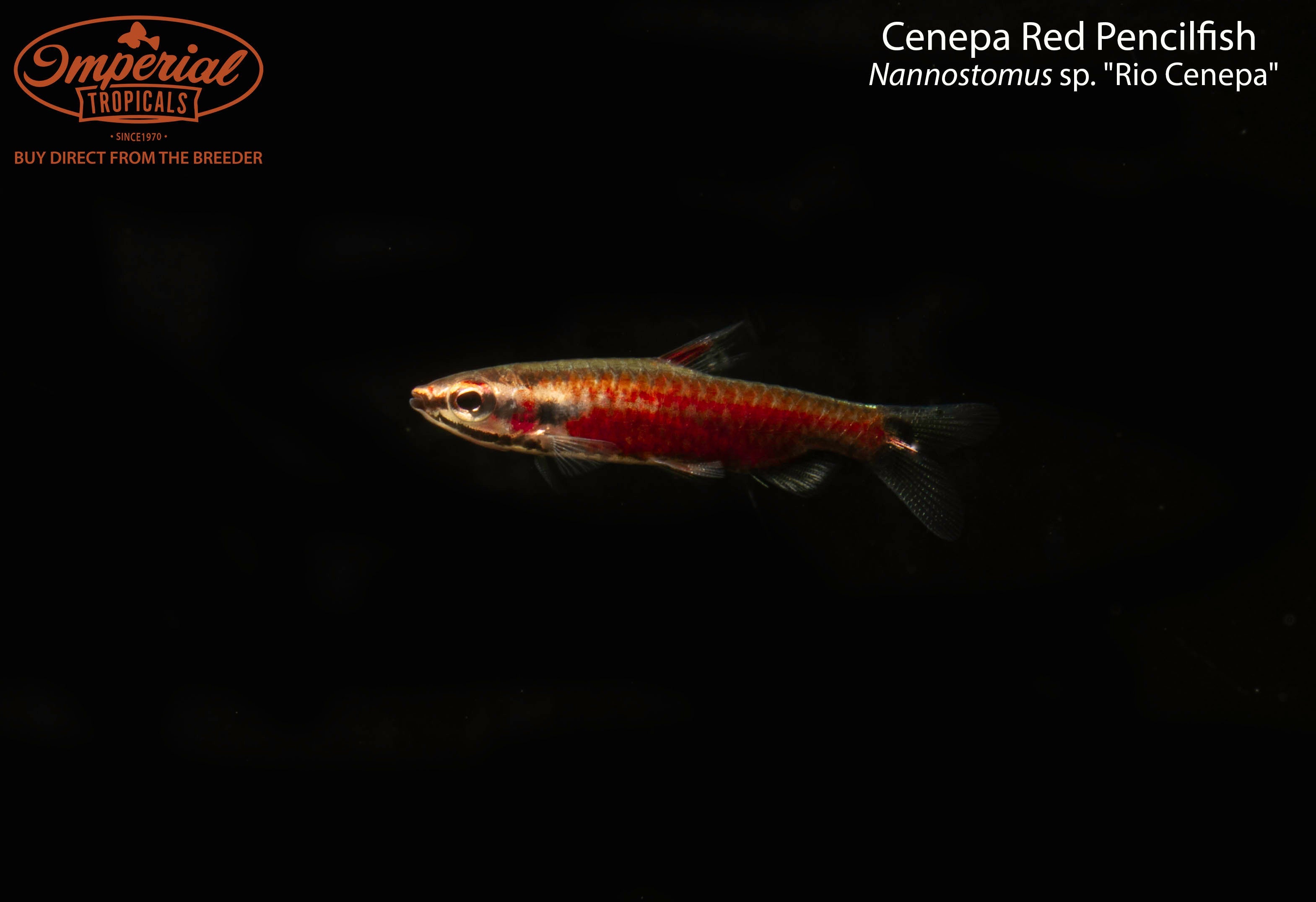
Remarks: One of the newer pencilfish on the scene, the Cenepa red pencilfish is an absolute gem. When they were first discovered and had begun to be exported back in 2022, they took the hobby by storm. It isn't hard to see why as mature specimens are almost completely cherry red when kept in proper conditions. Typically they do have some black horizontal bars through the top and bottom of the body as well as through the eye, but these can be almost completely swallowed up by the red coloration when a healthy male is in breeding dress. Some pencilfish may also have have a gold color on the tops of their bodies just adding to the already breath-taking beauty of these tiny schooling fish.
The red coloration of the Cenepa red pencilfish aids them in hiding in plain sight in the wild as the waters they are typically found in are heavily stained reddish-brown. Like nearly all pencilfish, this species thrives in areas that are nearly devoid of current, heavily stained with tannins, very soft in regards to water hardness, contain lots of botanicals such as fallen leaves, are very warm, and have a very low pH that can be as little as 4.0. These conditions are ideal not only for the pencilfish, but also the tiny crustaceans and insects that make up a majority of these micropredators' diets. These conditions and protein-based diet should be replicated within the aquarium to allow the barred pencilfish to thrive. Feeding foods high in astaxanthin will help bring out the most of their red color. Like all pencilfish, they should not be kept in groups smaller than 6-8 to help ensure they feel safe. As they are a very skittish species, they will appreciate having plenty of cover in the form of live plants. Being surface swimmers, to prevent this species from jumping out of the tank when startled, a well-fitting lid should also be utilized.
Tankmates for pencilfish should be chosen with care as they are very small and skittish with little to no defense against bullying or predation. Overly aggressive or boisterous species or those large enough to swallow the pencilfish should be avoided. Other small, more docile species that benefit from the same parameters required by pencilfish such as tetras and rasboras can be a great choice. Many house pencilfish with Apistogramma species. The apistos will usually stick to the bottom of the tank while the pencilfish hover at the top so conflict should be minimal if present at all especially since as their genus name of Nannostomus indicates, the pencilfish has a mouth too small to eat even the smallest apisto fry. The presence of the pencilfish actually can help encourage spawning behavior in the apistos as they indicate the area is safe and free of predators. Whether you are seeking to just keep a fascinating species of pencilfish or are looking for a dither fish for dwarf cichlids, the Cenepa red pencilfish is an excellent choice sure to bring something truly unique to your aquarium with their intense coloration.

